The Wolf Formerly Known as OR-7
In the fall of 2011, a radio-collared Oregon wolf with the designation OR-7 from the Imnaha Pack in northeast Oregon made history. After an epic journey across the state, the two-year old male became the first confirmed wolf west of the Cascades since the last wolf bounty had been collected in 1947.
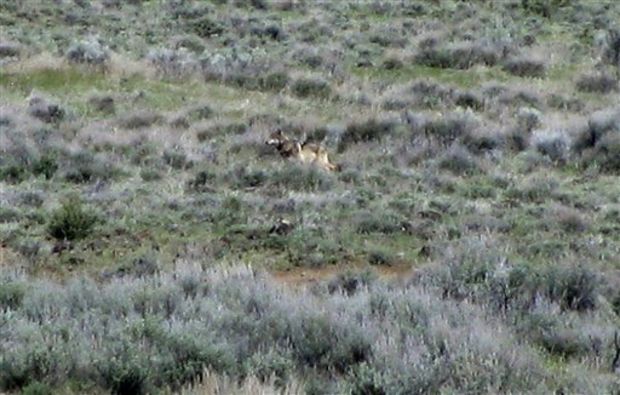 In a moment of rare historic symmetry, OR-7 - born to the first pack of wolves to return to Oregon since that tragic day - may have passed by the very spot in the Umpqua National Forest where Oregon's last wolf was killed.
In a moment of rare historic symmetry, OR-7 - born to the first pack of wolves to return to Oregon since that tragic day - may have passed by the very spot in the Umpqua National Forest where Oregon's last wolf was killed.
After spending time in the Soda Mountain Wilderness, Klamath Basin and Sky Lakes Wilderness south of Crater Lake, OR-7 continued his journey south and became the first wolf confirmed in California in nearly a century. Part of what made OR-7's trek across the state possible were the Wilderness and roadless areas he traveled through, demonstrating the value and worth of large roadless areas to facilitate wildlife corridors (learn more about roadless areas below).
In an attempt to draw attention to the great conservation success story that is wolf recovery, Oregon Wild sponsored a children's art and naming contest, and on January 4, 2012, OR-7 got a new name - Journey.
On the very same day, the first "real" photo of Journey surfaced in the Medford Mail Tribune, taken by a hunter's remote trail camera. A few months later, the first color photo of Journey was released by the California Department of Fish and Game (above) of Journey on a Modoc County hillside.
While the Oregon Department of Fish and Wildlife is no longer releasing new information on Journey, the California Department of Fish and Game regularly updates his (generalized) location.
- You can get the latest updates on Journey's travels here.
- Read a blog post about what Journey's been up to lately.
- You can also find more links specifically about Journey below.
Read on for maps, photos, and news of interest to those tracking the progress of Journey and Oregon's fragile wolf recovery, including descriptions of some of the landscapes Journey explored on his epic, ongoing Journey.
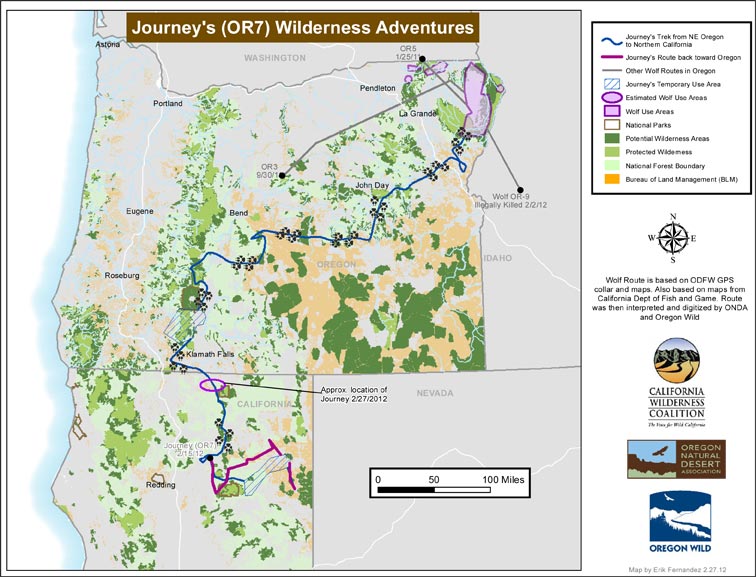
Map by Erik Fernandez of Oregon Wild (with data from ODFW, ONDA and California Wilderness Coalition) shows the path of Journey in relation to land uses across the state with a focus on the wild backcountry. Click the map for a more detailed and updated view.
The Struggle of Journey's Ancestors
Gray wolves (Canis lupus) were once common in Oregon, occupying most of the state. While a deliberate effort to eradicate the species was successful by the late 1940s, the trouble for wolves began before Oregon was even a state.
In 1843 the first wolf bounty was established and Oregon's first legislative session was called in part to address the "problem of marauding wolves." By 1913, citizens could collect a $5 state bounty and an Oregon State Game Commission bounty of $20. The last recorded wolf bounty was paid out in 1947.
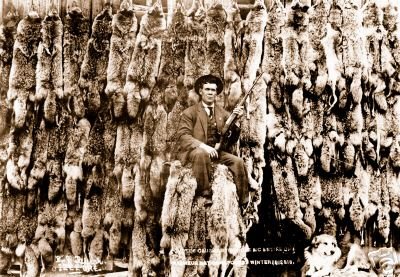 In 1995, 66 wolves were reintroduced to Yellowstone National Park and Central Idaho. A few years later, after an absence of over half a century, wolves began to take their first tentative steps towards recovery.
In 1995, 66 wolves were reintroduced to Yellowstone National Park and Central Idaho. A few years later, after an absence of over half a century, wolves began to take their first tentative steps towards recovery.
Having dispersed from Idaho, the native species is once again trying to make a home in Oregon. One of the first sightings came in 1999 when a lone wolf was captured near the middle fork of the John Day River, put in a crate and quickly returned to Idaho. In 2000, two wolves were found dead - one killed by a car, the other illegally shot.
In 2006, a flurry of sightings led state wildlife biologists to believe that a number of wild wolves were living in Northeast Oregon near the Wallowa Mountains and the Eagle Cap Wilderness. In May of 2007 a wolf was found shot to death near La Grande.
After that sad chapter, wolves began to establish a fragile foothold in the state. In July 2008 pups were confirmed to a wolf named Sophie by the Oregon Wild wolf pack (and B-300 to government biologists). Those pups represented the first in Oregon nearly 60 years! A second set of six pups were confirmed and videotaped in November 2009. The following July, a third litter of pups was confirmed.
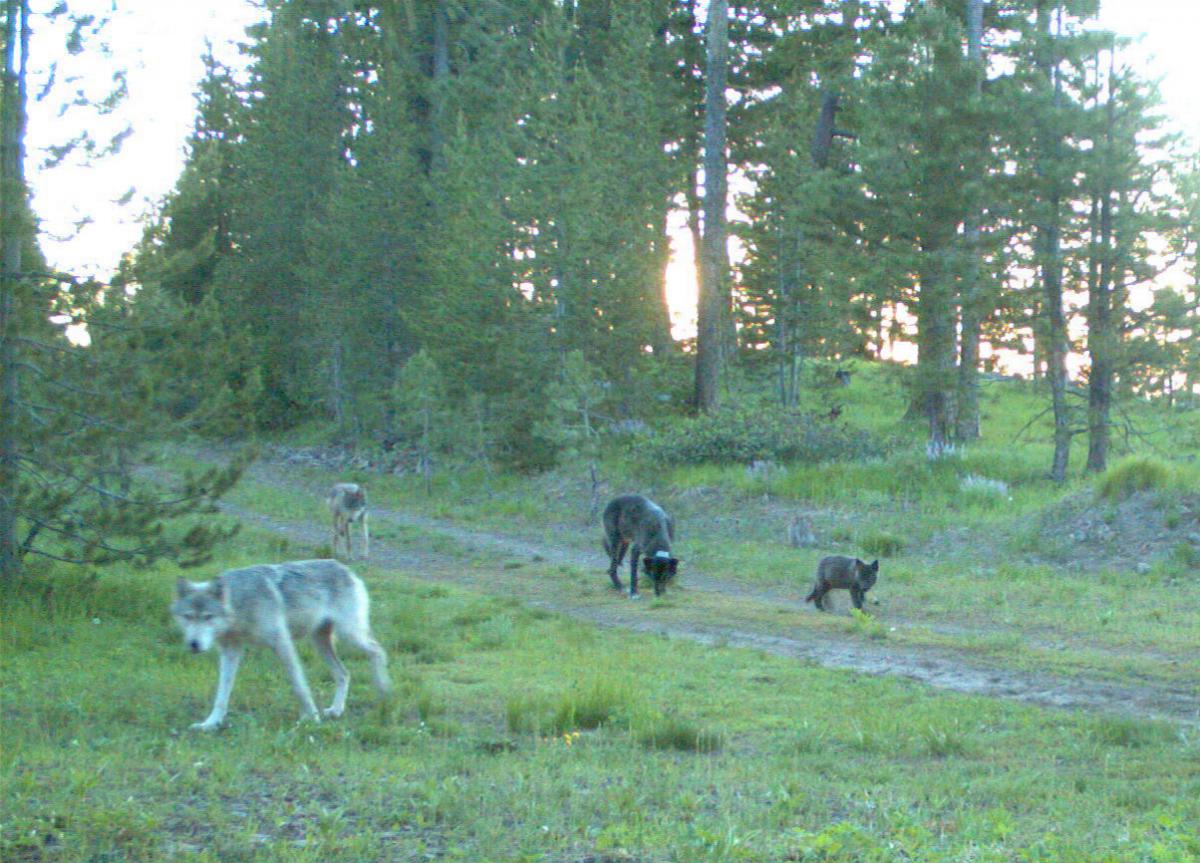 |
An Imnaha Pack photo from ODFW. This pack was the second to successfully raise pups in Oregon since wolves began to return in the late 1990s. From left to right are Sophie (the alpha female and Journey's mother), a yearling, the alpha male (OR-4, the father of Journey), and a pup. |
Unfortunately, the news was tempered with additional poaching and heavy-handed state management. After peaking at 26 confirmed wolves, wolf recovery stalled out in Oregon 2011.
While some wolves dispersed from the Imnaha Pack, only one pup was confirmed to Oregon's first pack, and two pups were confirmed in one of the state's other two packs (the Walla Walla and Wenaha). Oregon's confirmed wolf population fell to 17, and then to 14, when the state killed three more wolves (two on purpose) and poachers killed a fourth. By the end of 2011, Oregon's confirmed wolf population held its ground and stood at 29 (30 when Journey was in the state).
Anticipating the eventual return of wolves, the state has initially created a wolf conservation and management plan in 2005, aimed at making rational decisions in the light of day that would lead to wolf recovery that worked for everyone.
Though state polling put support for wolf recovery at over 70 percent, the plan was weak, allowing the state to kill wolves at the request of the livestock industry and others, and set scientifically indefensible recovery goals.
In 2010, the plan was reviewed and revised. The public process took the better part of a year and demonstrated that support for wolf recovery had grown. Over 90 percent of a staggering 20,000 public comments were in favor of stronger protections for Oregon's endangered gray wolves.
Oregon Wild joined other conservationists and the Oregon public in defending the plan against continued attacks. Though the plan survived relatively intact, most of the approved changes made it easier to kill wolves.
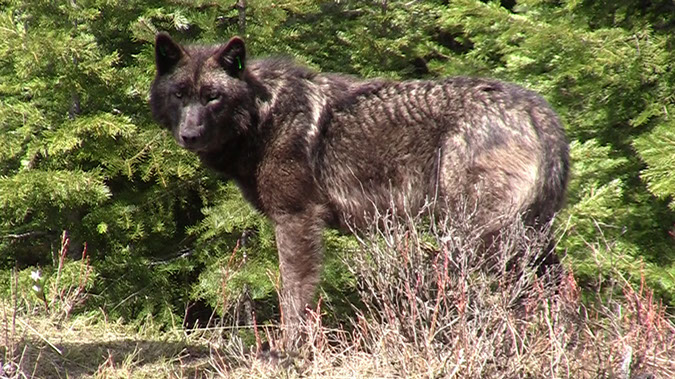 Still, wolves are threatened by a purposeful campaign of misinformation and fear. This webpage shoots down many of the common myths about wolves. A small number of vocal anti-wolf activists along with industry lobbyists and their political allies continue to work to undermine already weak protections for wolves and other wildlife.
Still, wolves are threatened by a purposeful campaign of misinformation and fear. This webpage shoots down many of the common myths about wolves. A small number of vocal anti-wolf activists along with industry lobbyists and their political allies continue to work to undermine already weak protections for wolves and other wildlife.
Though not representative of a state that values native wildlife, political pressure has mounted and the Oregon Department of Fish and Wildlife began to violate the spirit of the wolf plan by quickly turning to lethal control.
In 2011, conservationists claimed, and a judge agreed, the agency was also violating the law. Over the objections of the Oregon Cattlemen's Association and ODFW leadership, the state was barred from purposely killing endangered wolves.
For a state that prides itself on its green reputation, the extermination of wolves is one of our greatest environmental tragedies. But their return represents an opportunity at redemption.
Hear Journey's dad, OR-4, howl at a handful of Oregon Wild staffers while on a hike in the Wallowa-Whitman National Forest:
Journey's Favorite Oregon Wildlands
Soda Mountain Wilderness
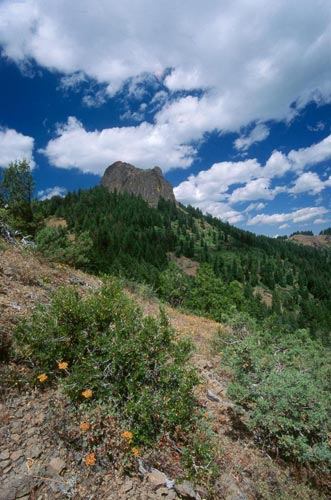 The Soda Mountain area in southwestern Oregon is an ecological mosaic where the state's eastern desert meets towering fir forests. The biodiversity of its evergreens, sunlit oak groves, meadows filled with wildflowers, and steep canyons are unmatched in the Cascade Range.
The Soda Mountain area in southwestern Oregon is an ecological mosaic where the state's eastern desert meets towering fir forests. The biodiversity of its evergreens, sunlit oak groves, meadows filled with wildflowers, and steep canyons are unmatched in the Cascade Range.
The Soda Mountain Wilderness is also a rare cow free wilderness, making it a particularly good place for a wolf to be active.
The area is home to a spectacular variety of rare species of plants and animals whose survival depends upon the region's continued ecological integrity. Roosevelt elk, cougars, black bears, golden and bald eagles, goshawks and falcons roam its lands and skies.
In 2009, President Obama signed the Omnibus Public Lands Management Act (HR 146) into law, marking the final step for expanded Wilderness protections in Oregon and specifically for Soda Mountain. OR-7's visit to this wilderness area highlights the importance of protecting large expanses of Oregon's roadless wildlands.
Learn more about Oregon Wild's efforts to protect the Soda Mountain Wilderness.
Klamath Basin
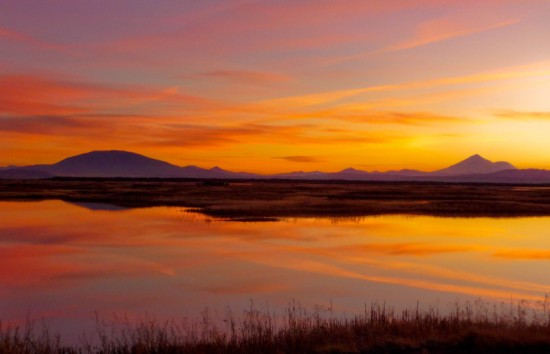 On his way south, Journey passed through the Klamath Basin, an area south of Crater Lake with some of the most important wildlife habitat on the West Coast. The Klamath Basin forms the narrow point of the hourglass that is the Pacific Flyway, and the Oregon portion of the basin is home to dozens of wildlife for whom the area wildlife refuges are critical to their survival.
On his way south, Journey passed through the Klamath Basin, an area south of Crater Lake with some of the most important wildlife habitat on the West Coast. The Klamath Basin forms the narrow point of the hourglass that is the Pacific Flyway, and the Oregon portion of the basin is home to dozens of wildlife for whom the area wildlife refuges are critical to their survival.
With six National Wildlife Refuges in the basin, it's no wonder Journey decided to make the Klamath Basin one of his many temporary homes. This collection of refuges in southern Oregon and northern California is often referred to as the Klamath Basin National Wildlife Refuge Complex, and totals nearly 200,000 acres.
The basin consists of a variety of habitats, including freshwater marshes, open water, grassy meadows, coniferous forests, sagebrush and juniper grasslands, agricultural lands, and rocky cliffs and slopes. Over 430 different species have been observed on or near the refuges with a peak of over one million migratory birds in the fall. If you've never visited, it's an amazing place.
Unfortunately, the refuges are nearly always last in line in a long cycle of use for the region's scarce water supply, pitting water-hungry agribusiness against native fish wildlife.
Sky Lakes Wilderness
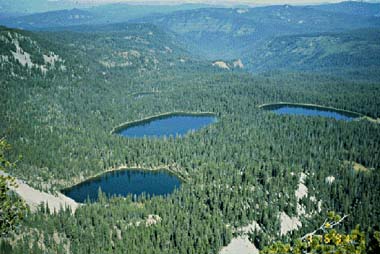 Journey also spent some time in the Sky lakes wilderness area just south of Crater Lake National Park. Fieldwork conducted by ODFW determined OR-7 visited an elk carcass and livestock carcasses (bone pile) in this area.
Journey also spent some time in the Sky lakes wilderness area just south of Crater Lake National Park. Fieldwork conducted by ODFW determined OR-7 visited an elk carcass and livestock carcasses (bone pile) in this area.
Congress designated the Sky Lakes Wilderness as part of the 1984 Oregon Wilderness Act, and it now totals 113,849 magnificent acres. All of this wilderness is located in Oregon and managed by the Forest Service.
With a name like Sky Lakes, this Wilderness is obliged to deliver at least more than one impressive sapphire pool, and it does. In fact, it takes it's made up of three former glacial basins, stretching along the crest of the volcanic Cascade Mountains from the border of Crater Lake National Park on the north to State Highway 140 in the south: Seven Lakes, Sky Lakes, and Blue Canyon basins.
Sky Lakes serves as important wildlife habitat, particularly for the elk of the famous Union Peak herd, which summers in the higher elevations of Crater Lake National Park. The herd is one of many in the area.
Crater Lake Wilderness
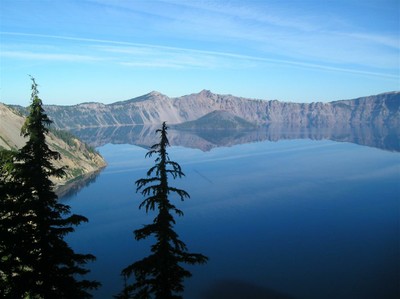 In November and December of 2011 Journey spent some time in Crater Lake National Park on his way to the Sky Lakes Wilderness.
In November and December of 2011 Journey spent some time in Crater Lake National Park on his way to the Sky Lakes Wilderness.
Crater Lake and its surrounding wildlands have inspired people for generations as it provides the iconic postcard image that encapsulates Oregon's beauty and commitment to conservation. Crater Lake attracts half a million annual visitors who come to gaze into its pure, clean water, marvel at its unique geology, and explore its rugged and exciting backcountry. But the natural beauty of Crater Lake extends far beyond Wizard Island and the caldera. It includes spectacular roadless lands both inside and outside of the official boundaries of the park.
Despite the beauty and importance of this National Park, it has not yet been protected as the wilderness it is, and therefore remains at risk. Several recent, rather reckless timber sales like D-Bug and Bybee have raised the eyebrows of the conservation community, and ongoing development proposals have put the critical wildlife habitat surrounding the park at risk.
In an age of climate change, this wildlife corridor has become even more important. If we wish to see more wildlife like Journey traveling through this area, it will need to remain wild for years to come. That requires permanent protection as Wilderness.
The Roadless Rule
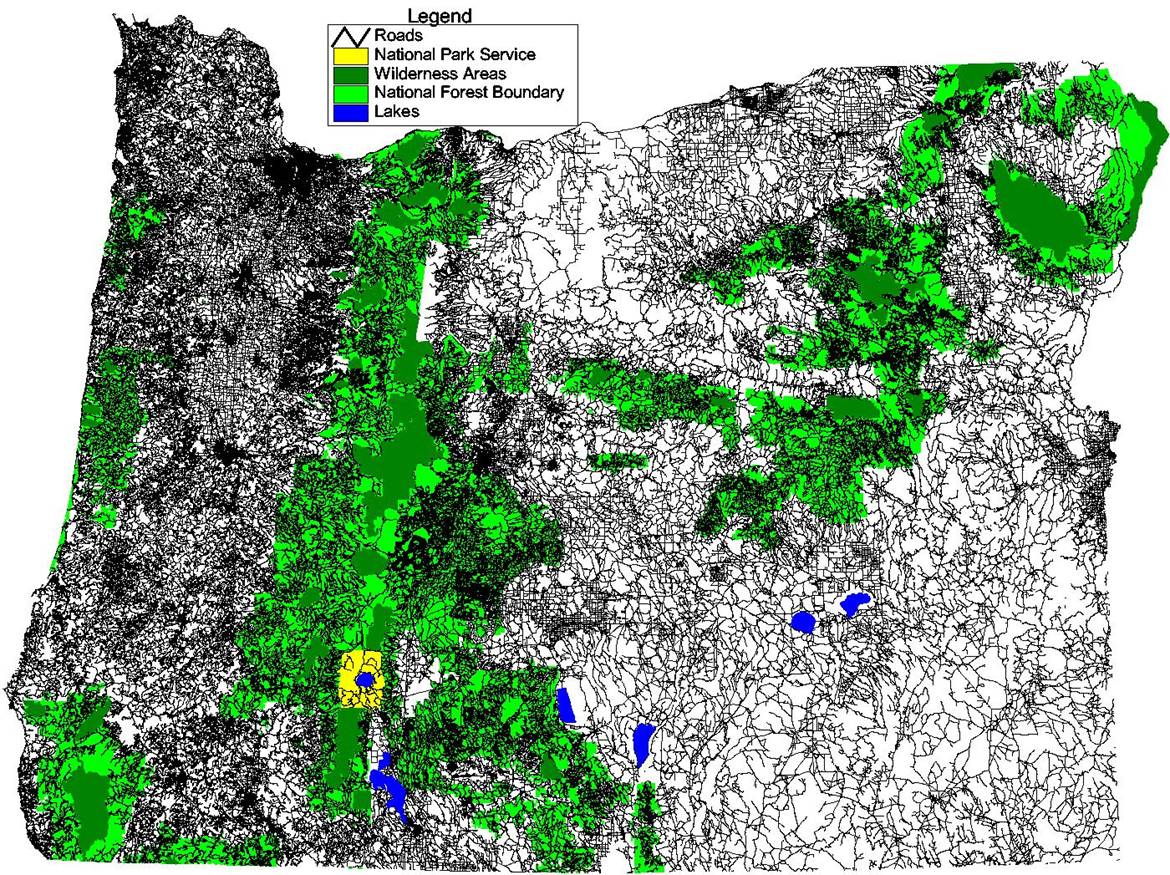 Throughout his travels OR-7 consistently utilized Oregon's roadless areas. His path highlights the importance of maintaining and increasing the parts of Oregon that remain roadless and largely wild.
Throughout his travels OR-7 consistently utilized Oregon's roadless areas. His path highlights the importance of maintaining and increasing the parts of Oregon that remain roadless and largely wild.
The term "roadless" typically refers to areas on federal land without any major roads or development. Federal lands that contain roadless areas include National Forests and Bureau of Land Management (BLM) land. Besides providing a key oasis for wildlife, roadless areas also filter drinking water, provide unique recreational opportunities, draw visitors into Oregon's vibrant recreation economy, and bolster the state's overall quality of life.
In 2001, the Roadless Area Conservation Rule was issued by President Bill Clinton. The Roadless Rule protected 58.5 million acres of National Forest land (including nearly two million acres in Oregon) from road-building and related commercial development.
The Roadless Rule didn't reduce existing access in our National Forests, which are already criss-crossed with more roads than the entire U.S. Interstate Highway System. Even so, the rule was tossed aside by the Bush administration in 2005, and replaced with a demonstrably weak, reckless replacement rule.
After nearly a decade of legal wrangling by the Bush administration and its allies in the timber industry, wildlife everywhere could breathe a sigh of relief when the rule once again became the law of the land in October 2011, right around the time of Journey's historic trek.
However, many roadless areas still remain unprotected, and as an administrative choice the Roadless Rule remains at the whim of changing administrations.
Learn more about what Oregon Wild is doing to permanently protect and restore roadless wildlands while the Roadless rule is in place.
Journey Links
For more information on Journey and wolves in Oregon follow these links:
- Where is Journey?
- Selected news on Journey:
- Coming full circle — a wolf roams near Crater Lake
- NBC Nightly News features Journey
- Time Magazine on Journey
- Conservationists Celebrate First Wolf in Western Oregon
- Famous Trekking Wolf Gets Apt New Name – “Journey”
- Famous Wolf Taking a Wilderness Tour Through Oregon and California
- Oregon Wild newsletter feature on Journey
- Oregon Wolf news including updates on OR-7's progress
- Learn more about wolves and wolf recovery in Oregon
- Oregon's Wolves Facebook page
- The Oregon Wild Wolf Pack - become a voice for wolves!
- Get a Don't Stop Believin' t-shirt to support Oregon Wolf recovery here:

